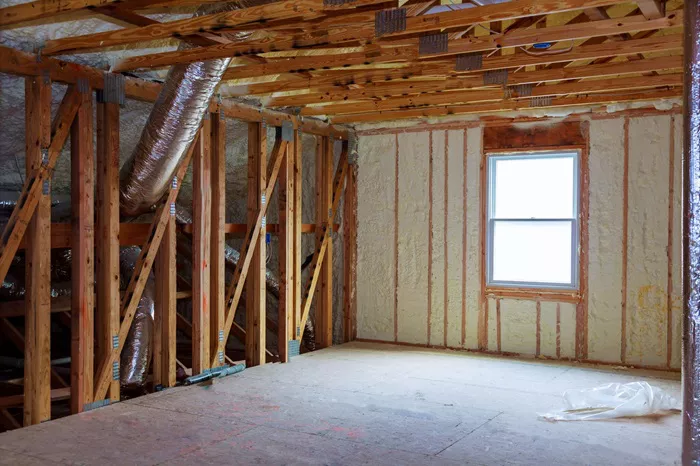Spray foam insulation is a popular choice for both residential and commercial properties due to its excellent thermal insulation properties and air-sealing capabilities. Understanding the cost of spray foam insulation can help you make an informed decision about whether it is the right option for your project. This guide will explore the factors influencing spray foam insulation costs, including types, installation factors, and regional variations.
1. Types of Spray Foam Insulation
Open-Cell Spray Foam
Cost Range: Typically between $0.50 to $1.00 per board foot.
Characteristics: Open-cell spray foam is less dense and has a lower R-value compared to closed-cell foam. It is ideal for interior applications where high moisture resistance is not required. It provides excellent soundproofing qualities and is often used in residential settings.
Applications: Ideal for walls, ceilings, and attics where moisture resistance is not a primary concern.
Closed-Cell Spray Foam
Cost Range: Typically between $1.00 to $1.50 per board foot.
Characteristics: Closed-cell spray foam is denser and offers a higher R-value per inch of thickness. It provides superior insulation and moisture resistance, making it suitable for both residential and commercial applications. It also adds structural strength to buildings.
Applications: Ideal for areas prone to moisture exposure such as basements, crawl spaces, and exterior walls.
2. Factors Affecting Spray Foam Insulation Costs
Size of the Area
Cost Calculation: The total cost of spray foam insulation is often calculated based on the area to be insulated, measured in square feet or board feet. Larger areas will naturally result in higher overall costs due to increased material and labor requirements.
Economies of Scale: Bulk installation might reduce the per-board-foot cost, as contractors may offer lower rates for larger projects.
Thickness of Insulation
Cost Implications: The thickness of the spray foam affects the overall cost. Closed-cell spray foam requires a greater thickness to achieve desired R-values, impacting the total expense. Open-cell foam may require more depth to match the insulating power of closed-cell foam.
Energy Efficiency Goals: Thicker applications may be necessary for achieving specific energy efficiency goals or meeting building codes.
Preparation and Site Conditions
Surface Preparation: Costs can increase if significant surface preparation is needed before applying the spray foam. This may include cleaning, repairing, or treating surfaces to ensure proper adhesion.
Accessibility: Hard-to-reach areas or complex site conditions can raise installation costs due to increased labor and specialized equipment requirements.
Labor Costs
Installation Complexity: Labor costs vary based on the complexity of the installation. Experienced contractors may charge higher rates for their expertise, but they can ensure a high-quality installation with fewer issues.
Regional Variations: Labor rates differ by region, which can influence the overall cost of installation. Areas with higher living costs may experience higher labor rates.
See also: What Is The Average Cost Of A Metal Roof?
3. Additional Costs and Considerations
Permits and Inspections
Permitting Fees: Some regions require permits for spray foam insulation installation, which can add to the total cost. Check local building codes and regulations to determine if permits are needed.
Inspection Costs: Post-installation inspections might be required to ensure compliance with building codes and proper application.
Maintenance and Repairs
Long-Term Costs: While spray foam insulation is durable and low-maintenance, potential future costs include repairs or reapplication if damage occurs. Regular inspections can help identify and address issues early.
Energy Savings
Return on Investment: Spray foam insulation can lead to significant energy savings by reducing heating and cooling costs. This can offset the initial investment over time, contributing to a positive return on investment.
4. Comparing Costs with Other Insulation Types
Fiberglass Insulation
Cost Comparison: Fiberglass insulation generally costs between $0.40 to $0.70 per square foot, making it less expensive than spray foam insulation. However, it may not provide the same level of air sealing and moisture resistance.
Performance Differences: While fiberglass is a more affordable option, it often requires additional sealing to achieve the same energy efficiency as spray foam.
Cellulose Insulation
Cost Comparison: Cellulose insulation typically ranges from $0.60 to $1.00 per square foot. It is a more eco-friendly option but may not match the thermal performance of spray foam.
Benefits: Cellulose is made from recycled materials and offers good soundproofing but may require additional treatments to enhance moisture resistance.
See also: How To Evaluate The Cost Of Quartz Countertops: Factors, Brands, And Installation
5. Regional Cost Variations
Geographic Differences
Cost Impact: The cost of spray foam insulation can vary significantly depending on your location. Areas with higher living costs or limited availability of insulation materials and contractors may experience higher prices.
Local Market Conditions: Regional supply and demand, as well as local regulations, can influence pricing. It’s advisable to obtain multiple quotes from local contractors to get a better understanding of market rates.
Climate Considerations
Regional Requirements: In regions with extreme temperatures or high humidity, additional insulation might be required, which can impact overall costs. Spray foam’s effectiveness in addressing these conditions can justify the investment.
Conclusion
The cost of spray foam insulation varies widely based on factors such as type, area size, thickness, and regional differences. While spray foam insulation generally comes with a higher upfront cost compared to other insulation types, its superior insulating properties, air-sealing capabilities, and potential for energy savings make it a valuable investment for many properties. By understanding the factors that influence cost and comparing them with other insulation options, you can make an informed decision that aligns with your budget and energy efficiency goals. Always consult with a professional to get accurate estimates and ensure a successful installation that meets your needs.
Related Topics:

